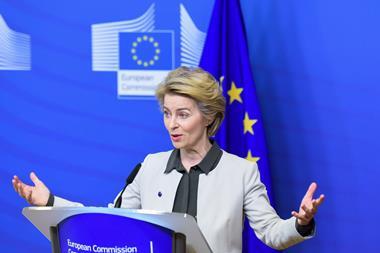Cross-border mandate investments by US-based tax-exempt institutions reached a record high of $1.17trn (€920m) as of year-end 2005, according to InterSec Research’s most recent direct manager assets under management survey.
InterSec Research analyses cross-border mandate investments by US-based tax-exempt institutions through our direct manager AUM survey and universe analytics reporting.
For more than 30 years, InterSec has witnessed the dynamic growth of these asset classes. At end-2005 equities continued to be the leading cross-border asset class with $1.04trn under management by managers across the US, the UK and continental Europe. UK and continental Europe-based asset managers have played a significant and successful role in gathering assets and providing competitive returns.
Actively managed equity assets still dominate the US institutional cross-border marketplace in 2005, with broad international equity representing the lion’s share at $647bn, or 62% of total equity investments, followed by global equity at $65bn, and global emerging equity $101bn.
But UK and continental European asset managers have had mixed success in capturing market share in the US tax-exempt institutional marketplace.
In terms of US tax-exempt institutional cross-border equity assets under management, the UK/European asset managers’ share is proportional to their share of products available in the marketplace, as seen in Exhibit 1.
UK/European managers have recently improved their lot in the dedicated emerging markets equity asset class. By 2003, UK/European firms had a market share of about 17% of total US institutional assets in this mandate. In 2005, they controlled 20% of the market with out significantly increasing the number of products offered. It was also the first time in five years that UK and continental European managers’ emerging equity market penetration was greater than that of both their international equity and global equity programmes.
According to InterSec’s latest international asset manager AUM research, UK/European managers have gained a considerable amount of attention in recent years among US institutional investors investing in both International and global (including both US and non-US) equities. But the new asset flows in Exhibit 2 show the real increase has been in the emerging equity mandate.
In terms of tax-exempt fundings into new separate accounts and new commingled funds, UK and continental European managers gathered 52.8% of US institutional assets in 2005 flows into emerging equity, a level remarkably higher than it was in the previous five years. In 2005 five of the top 10 most successful emerging markets equity managers by asset gathering had their investment functions based in the UK.
They have been able to capitalise on record levels of asset turnover in the emerging equity mandate among US institutions during the last three years. This could be due to the investment capacity constraint issues faced by many US emerging equity managers. However, these constraints exist for UK/European managers as well. In fact, all of the several UK/Europe managers are already at different stages of closing their emerging equity products to new assets.
Investment performance is also mixed. In 2003 InterSec released a paper posing the question Are US Pension Funds Favoring US Investment Firms? Our primary conclusion was that many UK investment firms have lower risk profiles in their investment portfolios which are often designed for sale to continental European and UK pension funds that strategically budget active portfolio risk.
InterSec’s most recent equity universe performance results found that there had been no significant change in this trend. In the US many investment firms have had funding success with strong investment performance even with high relative levels of active risk (especially in core/satellite international equity programmes). This has given US-based investment firms a slight edge in winning US institutional broad international equity assets.
In the emerging markets equity space, it has been UK managers that have had recent asset gathering success as a result of superior performance.
Over the three years ending December 2005 out of 22 UK/Europe-based products and 51 US-based products, US managers had a median return of 41.4% versus 40.4% for UK managers.
Nonetheless, on the risk-adjusted basis, 2005 was a turnaround year for most UK/European managers. Some of the top risk adjusted performance investment products over past year were actually UK based (Exhibit 3). While the median UK/European manager still underperformed, the higher tail of the one-year information ratio suggests that there are a number of UK/European emerging equity managers better capable of rewarding risks with superior performances than are top US managers.
Nan Jiang is a research consultant at Boston-based InterSec Research























No comments yet